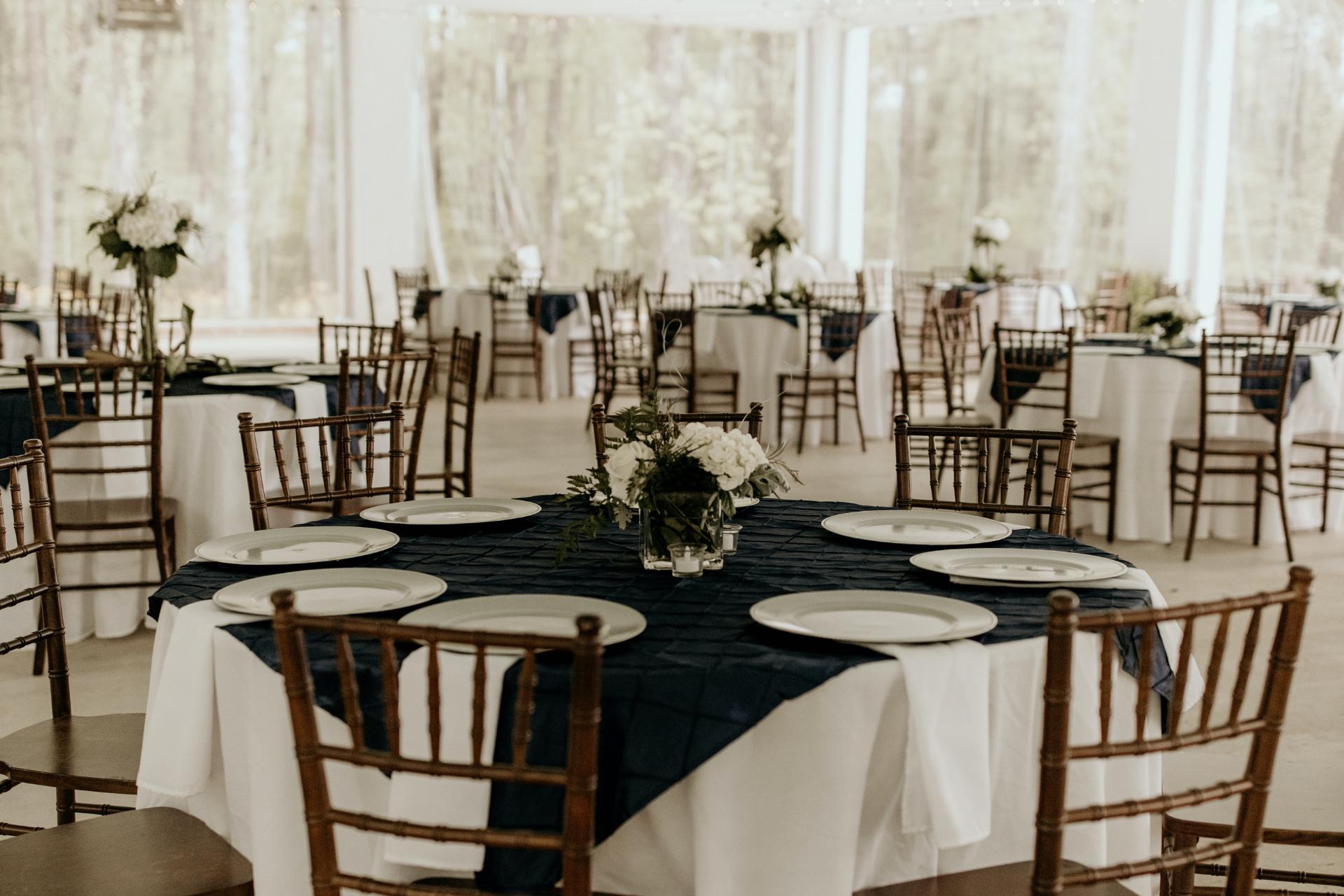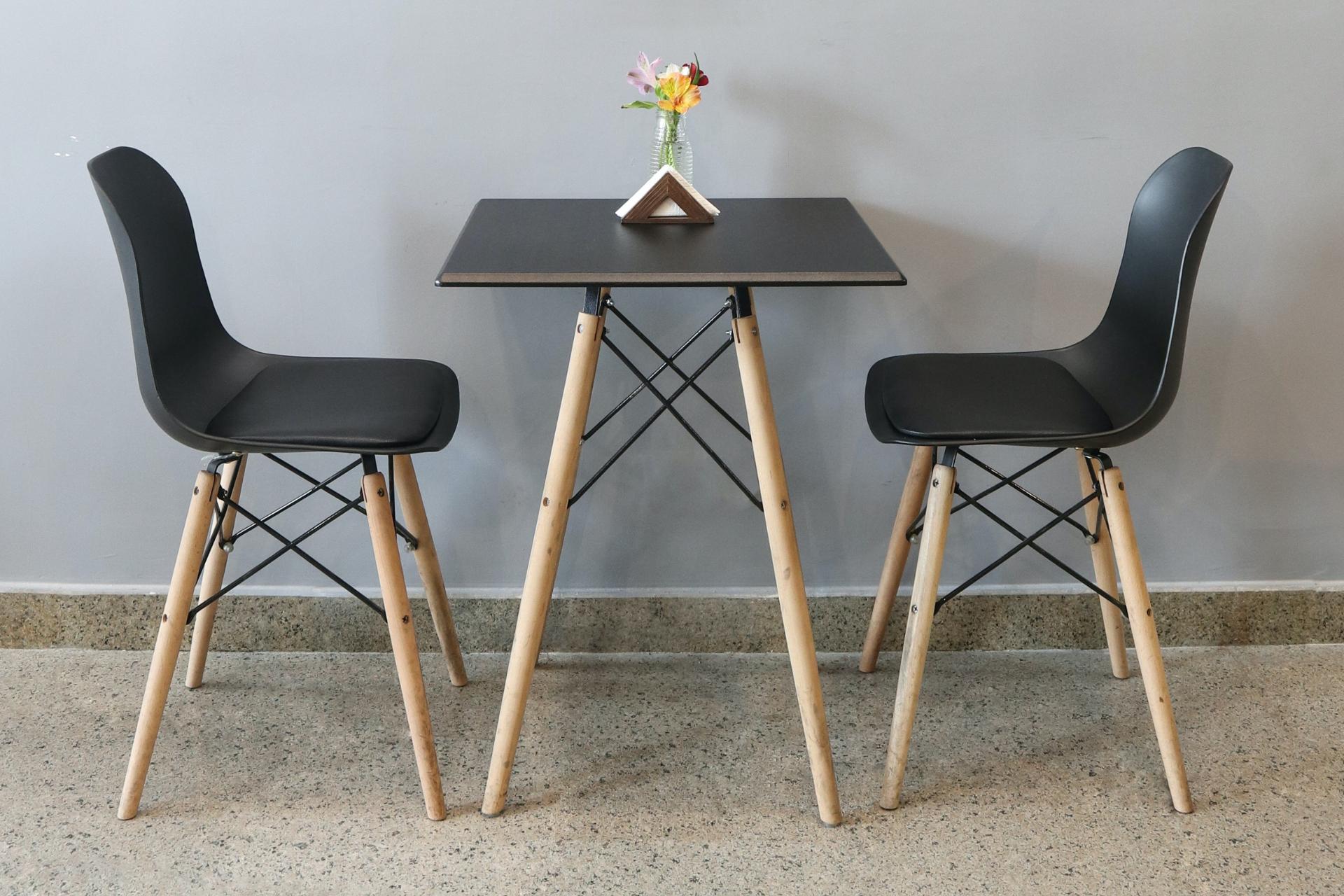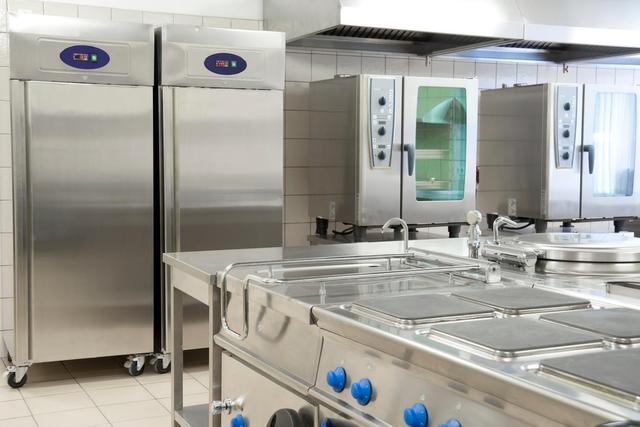Do you want to create a new restaurant but don't know where to start?
In this article I show you everything you need to do!
Opening a restaurant is one of the ideas most used by entrepreneurs to gain economic freedom. However, globally, at least 50% of restaurants fail in the first few months. Why? Well, there are many reasons, but the most common is the lack of capital and the lack of planning to carry out the business.
In this article I will tell you:
- How to create a restaurant from scratch and some useful tips.
- About the importance of doing it correctly.
- And what to expect after opening a restaurant.
If you do not have experience with this type of business, this is the article you need to read to get a general idea of the things you must do to open a restaurant.
In addition, I will share with you part of my experience in this world — I hope it will be of value to you in your journey.
Let's get started!
It all starts with an idea.

A restaurant, and in reality, any business, is born from an idea. It can be anything:
- An interesting product that you think will sell well.
- The idea that creating a restaurant will make you money.
- The idea that you have enough passion to cook delicious food.
- Maybe one day you have met with friends and family and they came up with this project.
- Or, you may have been selling homemade food to your friends and family for a long time, and you want to take the next step.
- And more.
This idea is the first step that not many people mention in this type of article — I have even been guilty of skipping this step.
What matters is that you have that idea, regardless of whether it is well defined or not, but that you believe in it enough to consider it a serious opportunity.
If you already have this idea, it's time to start the actual work — define that idea.
Don't write a business plan… yet.

Although many guides similar to this begin by saying that you need a business plan, that you need to create a marketing strategy and define every aspect of your future restaurant right away, I don't entirely agree.
Why?
Well, it's a waste of work.
How can you create a complete theory based on an idea that you came up with? How can you create an organization chart of a mental company that has not given you evidence that it will work?
It's absurd.
Therefore, in my guide, the first thing you should do is a market study.
My reasoning is that you can't be sure that your idea will work because it sounds great to you.
Unless you want to have a restaurant where only you, your family, and friends eat.
That is why most of the time, families and friends are not the best business partners — they are not always the most neutral in giving you their opinion.
I want to clarify that this does not apply to all ventures because if there were no risky people who put their products and services on the market without knowing if they would work, we would not be here.
But that just means that some ideas are so incredible that they are like fishing in a barrel when they become a business — if you have the courage and assurance that yours is, then you can start with that business plan.
Steps to open a restaurant.
Below I will detail each of the steps you must follow to open a restaurant successfully. Remember that not all situations are the same, so you may be able to skip certain steps depending on yours.
Likewise, some restaurants do not start from the same step, for example, if you already have a location, or if you have equipment from a past business, and more.
1. Conduct a market study.

Conducting a market study as soon as possible will help you define a concept, menu, or idea you have in mind so that it is easier to sell to the public later.
Once you define those aspects, you can continue with the next steps.
A market study can be quite simple — you can create and print a few forms with important questions to help you define your business, and start surveying people on the street.
You can use open or closed questions for your survey, such as:
- What type of restaurant do you prefer? / What type of restaurant do you prefer among the following options?
- Would you like a restaurant that serves X dishes?
- What is your favorite restaurant in the city?
- What is your favorite food?
You can also use other methods to conduct a market analysis, such as focus groups, in-person interviews, studying your competition, and you can even ask expert restaurateurs in your city.
You must include questions that help you define the following aspects:
- The viability of the concept or gastronomic offer that you have in mind.
- Average prices that your customers would be willing to pay.
- The consumption habits of your target audience.
- Your competition and its impact.
- The most ideal location to place your restaurant.
- And more.
The answers to these questions can help you define the project you have in mind and then shape it with the following steps.
2. Define the concept of your restaurant.
The concept of a restaurant is vital because it will define much of the experience you want to offer, from the food, to the type of service and the vibe of your restaurant.
It is a good idea to do the market research first so that you can create a restaurant concept that fits what the people of your city are looking for.
It can be something that is missing, a concept that has not been very exploited, or something that is totally original.
Still, if it is your first restaurant, it is a good idea to choose a simple concept that is successful in your city and modify it a bit to give it your personality.
Another recommendation is that you create a concept that is attractive to your target audience.
Considering that millennials are the segment with the most economic power today, it is a good idea for your restaurant to be modern, to stay adjusted to trends, and to have a young voice as a company.
The correct concept is what will help you personalize your restaurant so that it attracts the attention of the customers you want in your business.
3. Create a menu for your restaurant.

The third step is to create a menu for your restaurant. You may already have something in mind, but at this point, you must define what will be the exact dishes in your restaurant. You should consider:
- The prices of the products used.
- The availability of ingredients and suppliers. It is important that you find restaurant suppliers with whom you can create a good business relationship.
- The cost of preparation (gas, electricity, water, other services, and salaries of your restaurant).
- The price at which you will sell the products.
- And that everything is in line with the other details of the restaurant.
Another vital aspect that you must create at the same time is the design of the menu of your restaurant, which in turn must include the type of menu, the colors, the distribution of the dishes, images, graphic elements, and more.
You can count on the advice of a professional chef to create the dishes and the help of a graphic designer with experience in the restaurant niche to design the menu.
This will help ensure that your dishes look appealing, that your menu offers the right experience, and that your dishes taste and look delicious when they arrive at the table.
4. Write a business plan.

After you have these first steps completed, you will need to create a business plan to define other aspects of it.
A business plan is the holy book, the user guide, the instructions of your restaurant. In addition, it is a vital document for the next step.
It should include:
- An executive summary.
- SWOT analysis.
- Market analysis.
- Restaurant projections, such as average earnings, monthly sales, and more.
- You must have a cost breakdown to open the restaurant.
- A description of the location of the restaurant.
- Details of the operation of the restaurant and its business model.
- And more.
The business plan is vital for a restaurant, as it is what will help you get funds for the project, bank loans, define the operation of your restaurant, get partners, and more.
In some countries, it is even necessary to get certain permits.
5. Get funds for your project.

The next step is to raise capital for the entire project. This, of course, is vital, since money is what moves the gears of any business.
You will need money to:
- Rent or buy a venue.
- Buy equipment for the restaurant kitchen.
- Acquire equipment for the administration of the restaurant.
- Buy furniture and pay for decoration.
- Pay for renovations and adjustments to the restaurant space.
- Pay for professional advice — like designers, decorators, architects, and more.
- Pay for labor.
- Pay administrative salaries — to managers, recruiters, administrators, accountants, and more.
- Pay permits and legal advice.
- Pay salaries to employees.
- For the marketing strategy.
- And more logistics expenses.
Even if you have all the money you need for all this, it is a good idea to have partners, investors, or to look for bank loans that you can pay off later.
Why? Simply because it can be useful to have extra money when starting a business.
In fact, it is recommended that you have between 30% and 50% of the total budget for expenses that may arise when opening the business, or just to maintain the business while it gets traction in the local market.
This is crucial, especially considering that most new restaurant problems and most new owner mistakes are based on a lack of capital.
When opening a restaurant, it is better to have a surplus of capital, than to be short, since this can cause your business to fail shortly after opening and lose all the investment.
6. Rent or buy a venue.

After you have enough capital for all the expenses mentioned above, it is time to start the project by renting a commercial space. You can also buy a venue, although that can result in a much higher budget, depending on the area in which you decide to open your restaurant.
Leasing a place is also more recommended if you want to open a restaurant with limited capital — although it is not a guarantee that it will be cheaper in all cases.
When choosing a venue, you should consider:
- Your target audience — you should make sure that your target audience has access to or lives near the restaurant.
- What surrounds the premises.
- The possible threats of choosing that location. Like that the area is bad or that it is difficult to get to.
- The cost of rent and advance payments.
- The design, distribution, and size of the premises.
Choosing a venue is one of the most important aspects of the restaurant business. Even if your concept or your gastronomic offer is incredible, if you do not position your restaurant well, you can discover very quickly that it will fail.
You should consider that most of your customers will come from a fairly small radius around the restaurant — you can't expect your customers to come from very far away.
That is why the restaurant business is not really about attracting as many customers as possible, but about making the most out of the number of people within your target audience who are close to the restaurant, and getting them to return to it.
Customer loyalty is vital!
7. Get the necessary permits to operate the restaurant.

Another aspect that I did not mention in the previous point, but that you should consider, is that the location of your restaurant can limit the type of business you can open.
For example, if your restaurant is near a school, it may be more difficult to get permits to sell alcoholic beverages. Considering that booze is an incredible source of profit for restaurants and bars alike, this can greatly decrease your profits.
Beyond that, you will have to get other important permits that obviously vary depending on your country, your state, and your city, in addition to the exact location of the venue.
That is why it is sometimes more convenient to find a commercial space dedicated to the restoration niche and that has the necessary permits.
Some of the types of permits you will need are:
- Operating permit.
- Security permissions.
- Sales permits for alcoholic beverages.
- Building permits.
- Permissions to place ads and banners.
- Permissions for the use of certain products.
- Permissions to hire and manage personnel.
- Health permits.
- And much more.
I do not recommend that, regardless of where you are, you avoid getting some of these permits — it is vital that you have everything in order legally to operate your business.
Otherwise, your business can be perceived as unsafe, receive hundreds of fines, or simply be closed as a health security measure.
This can even affect your future as an entrepreneur in other businesses that you may want to open later.
We have written some articles numbering the different permits that you may need in different parts of the world:
- Mexico.
- London.
- California.
- San Francisco.
- San Diego.
- Los Angeles.
- Houston.
- New York.
- Texas.
- Florida.
More are to come!
8. Decorate and equip your restaurant.

Decorating and equipping your restaurant is another aspect in which you cannot spare resources — especially in the kitchen equipment.
Your restaurant kitchen equipment is what will help your staff create delicious dishes to delight your guests. Without the correct equipment, it is impossible, and you will only have a restaurant that looks good from the outside.
It is a good idea to use 60% of your budget for equipment to equip the kitchen and 40% to decorate the restaurant, although this depends on the type of restaurant, the equipment you need, and other aspects.
For example, if you need specialized equipment to create the dishes for your restaurant, you will probably have to invest more than 60%.
That is why it is important to correctly define the menu of your restaurant and its concept.
In some countries, you can find commercial premises that are equipped with everything you need to open a restaurant, which can help you save a lot of money on equipment.
Still, you should always consider that buying equipment for your restaurant is a better long-term investment.
Regarding the decoration and furniture.

The decoration and furniture of your restaurant must be in line with the concept of your business. Some tips that I recommend you follow are:
- Buy high-quality furniture with functional designs.
- That you buy tables and chairs that are comfortable, functional, light, but not without style.
- That you buy more furniture than you need for the total space of your restaurant. So you can have spares!
- That you organize the different furniture in your restaurant very well.
A good distribution of restaurant furniture is greatly important because it can make clients comfortable or uncomfortable in your restaurant.
You should leave enough space between each piece of furniture, enough space for waiters to move comfortably between tables, and other considerations.
I recommend that you read our article on restaurant furniture for more details and tips.
9. Start hiring and training staff.
After you've equipped your restaurant, it's time to start recruiting, training, and managing your staff.
Hiring staff is one of the aspects restaurant owners neglect the most when managing their businesses.
Why?
Because they don't realize the value of a restaurant's employees.
Whether they are cooks or waiters, restaurant employees are the ones who truly run your restaurant with their work — and if they don't have someone to guide them properly, this will be a disaster.
Waiters and front staff are the faces of your restaurant, so they should be trained in customer service, sales, suggestive sales, use service scripts, and meet certain requirements for personal presentation and good manners.
The kitchen staff must be responsible, hygienic, have cooking experience, work as a team, and must be creative.
However, you can't expect to hire people who meet all of these requirements across the board.
It is important that you take charge of training your staff in:
- The specific way you want your customers to be treated.
- In the way they must collaborate with each other.
- In the way your restaurant operates internally.
- And in some cases, it is specific things that you do in your restaurant that are an important part of its concept.
If you fail to make your employees ambassadors for your restaurant in the best possible way, your business will be in trouble.
Lack of good service, mistreatment of customers, or failure to uphold the expectations that customers place on your restaurant can lead to a bad reputation, which is a sign of business death.
10. Begin your marketing strategy.
Although it is common to start the marketing strategy once the restaurant is ready to open, I do not recommend this personally.
My recommendation is that you start doing marketing for your business as soon as you have a business venue.
Why?
Because it is a simple, easy-to-use branding strategy that can help you give your business the origin story it needs to connect with your guests.
For example, you can start posting images of the remodeling or construction in your restaurant, and use storytelling to deliver a message that is consistent with your concept.
In addition, it must be a human message that helps your guests not only see your restaurant as a finished business but as a work in progress that has a lot of passion behind it.
Of course, this depends directly on your marketing strategy, which you must define considering many details such as:
- Your target audience.
- The concept, menu, vibe, and more of your restaurant.
- The channels used by your potential customers.
- Your operating budget.
- And the different types of marketing you can use.
Marketing is a tool for sales and creativity, so to tell you that there is an exact formula for marketing is simply a lie.
You should choose one or more methods to advertise your restaurant so that it is effective in attracting new customers, especially at the beginning.
Some of the methods that you should use are:
- Branding.
- Social media marketing.
- Consistent graphic elements.
- Create a website to offer taking reservations, online sales, and more.
- Email marketing.
- And customer loyalty strategies.
I have created an article that you can use to do marketing for a new restaurant.
11. Open your restaurant.

Finally, it is time to open the doors of your restaurant.
Your restaurant grand opening is one of the most exciting times in starting a business — although it is actually the trial by fire of your business.
At the time of opening your restaurant, you must have complied with each and every one of the steps that I mention here so that it can be a successful opening.
Still, opening a restaurant is intimidating for a new restaurant owner — so much so that we've created an article that can help you organize a grand opening in the best possible way.
What to expect after opening a restaurant?

Although the grand opening of a restaurant is a very important moment, it is not really the most difficult. The first three months of a restaurant are the most difficult because they are the ones that are full of uncertainty and insecurity.
If you are a person with doubts about your business, in the first three months you will possibly feel a lot of pressure about different things.
For example, if you are just starting out, you will realize that the restaurant business works a lot like the tide and the customers like waves. Sometimes customers keep coming in, flooding your restaurant with orders.
But sometimes, your restaurant goes into a day-long drought, with few customers helping to cover a few expenses.
My recommendation for these times is that you stay calm — just because customers don't come to your restaurant does not mean that it will fail.
Instead, this is the way restaurants work. Therefore, you should focus on three things:
- Do a lot of marketing with the methods you've studied.
- Create promotions, events, and more that are attractive to customers.
- Offer the best possible service to customers who go to your restaurant, regardless of how many they are.
This effort will be worth it, especially if you are doing things well. Eventually, your restaurant will gain traction, and you’ll begin to see the result of your work.
Importance of following the correct steps.
Following these steps or not is your decision — and under no circumstances should you consider that they are a guarantee of success. In the business world, and in life itself, you cannot always anticipate the challenges that will present themselves.
However, following these steps will give you a better understanding of those challenges, the various threats that can hinder your success, and other aspects of running a business that you might not consider if you are inexperienced.
In addition, this article will be of great help to you to better understand what it costs to open a restaurant, in terms of work, effort, and capital.
Owning and running a restaurant is not easy, but that does not change that it is one of the most rewarding experiences you can have.
In that sense, this article is utilitarian, since it will help you enjoy the experience more by reducing the difficulties by giving you the gift of foresight, even if it is partial.
Do you think it is time to start your journey in the world of restoration? I hope so!
![How to Open a Restaurant? [Full Guide]](https://www.imagelato.com/images/article-cover-how-to-open-a-restaurant-7a7880ea-1024w.jpg)



